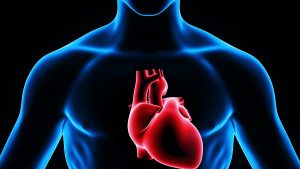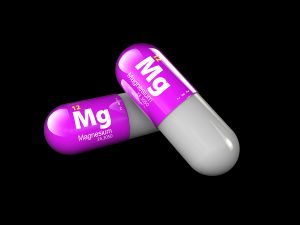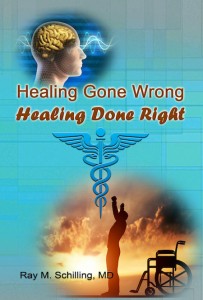Relaxation can calm your mind, but new research has shown that relaxation reduces inflammation as well.
This article is based on a research paper in Frontiers in Immunology in June of 2017.
It concentrated on the calming effect of meditation on the nuclear factor kappa B (NF-κB), which causes inflammation. We know that overstimulation of the sympathetic nervous system activates the inflammatory pathway by expressing the genes responsible for NF-κB. These authors showed that the reverse is true also, namely that meditation suppresses inflammation.
This metaanalysis of 18 research papers included 846 participants.
Here are brief summary findings of these 18 studies. Note that diverse relaxation methods had very similar results on the genes expressing inflammatory markers.
1. Qigong practitioners
First of all, a group of Qigong practitioners had 132 downregulated genes and 118 upregulated genes when compared to non-meditating controls. Meditation strengthens the immune system and delays cell death.
2. Sudarshan Kriya yoga
Also, one form of yoga breathing is Sudarshan Kriya yoga. Subjects who practiced this form of breathing yoga for 1 hour per day did not have the stress-related response on white blood cells. In contrast, the controls who did not meditate this way showed no change in the white blood cell response to stress. Those practicing yoga had a strengthened immune system. The meditators also showed strengthening of genes that inhibit cell death.
3. Chronic lymphocytic leukemia
Furthermore, eight patients with chronic lymphocytic leukemia were practicing the “seven yoga breathing patterns”; the popular Indian yoga teacher, Swami Ramdev, developed these. Those patients practicing the breathing yoga technique activated 4,428 genes compared to controls. They showed an up to twofold upregulation, which strengthened their immune system.
4. Loneliness in older people
Another study noted that loneliness in older people causes inflammation, morbidity and mortality. 55-85 year old volunteers were taking a course of mindfulness-based stress reduction. The researchers wanted to find out whether it was due to increased inflammation that older people were more susceptible to disease. The physicians tested blood mononuclear cells for genome-wide transcriptional profiling. Those older persons who had reported loneliness had more transcription factors for nuclear factor kappa B (NF-κB) than controls without feelings of loneliness. After an 8-week course those who no longer felt loneliness had a reversal of proinflammatory gene expression. The genes that had changed expression were located on monocytes and B-lymphocytes; these are cells of the immune system.
5. Care workers for patients with mental health problems
Care workers who looked after patients with mental health problems or chronic physical problems often have stress-induced chronic inflammation markers in their blood. A study involving 23 caregivers used a practice of Kirtan Kriya Meditation (KKM) assisted by an audio recording every day for 8 weeks. The subjects filled in questionnaires for depression and mental health before and after the 8-week trial. Physicians also took blood samples for transcriptional profiling before and after the KKM trial.
Meditation effects genes and reduces inflammation
The KKM meditation group had significantly less depressive symptoms and showed improvements in mental health. There were down-regulations in 49 genes and up-regulations in 19 genes compared to the controls. The pro-inflammatory NF-κB expression showed a decrease; the anti-viral gene expression showed an increase. This was measured using the IRF-1 gene. This gene controls the expression of the interferon-regulatory factor 1 (IRF-1 gene), which controls the immune response to viral infections. The interesting observation here was that a time of only 8 weeks of meditation was able to reduce inflammatory substances in the blood and could activate the immune system to fight viruses better. Further tests showed that it was meditation that stimulated the B cells and the dendritic cells.
6. Younger breast cancer patients
Younger breast cancer patients taking a mindfulness meditation course: Another study involved younger stable breast cancer patients after treatment that also had insomnia. Patients with both breast cancer and insomnia often have a lot of inflammatory markers in the blood. In a study with 80 patients 40 underwent treatment with Tai-Chi exercises, the other group of 40 with cognitive-behavioral therapy. Tai-Chi exercises reduced IL-6 marginally and TNF (tumor necrosis factor) significantly. There was a 9% reduction with regard to the expression of 19 genes that were pro-inflammatory; there was also a 3.4% increase with regard to 34 genes involved in regulating the antiviral and anti-tumor activity in the Tai-Chi group when compared to the cognitive-behavioral therapy group.
Measurable results of mindfulness meditation course
While cognitive therapy has its benefits, the winner was the Tai-Chi group where there was down-regulation of 68 genes and up-regulation of 19 genes. As in the prior study there was a decrease of the pro-inflammatory NF-κB expression, which reduced the inflammatory response.
7. Study with fatigued breast cancer patients
In another breast cancer study with fatigued breast cancer patients the patients practiced 3 months of Iyengar yoga. After 3 months of yoga 282 genes showed up-regulation and 153 genes showed down-regulation. There was significant lowering of the expression of NF-κB. This suggests a lowering of inflammation. At the same time questionnaires showed that the fatigue factors experienced a reduction 3 months after initiating yoga exercises.
8. Mindful meditation used in younger breast cancer patients
A group of 39 breast cancer patients diagnosed before the age of 50 received six weekly 2-hour sessions of mindful awareness practices (MAP). This program is very suitable for cancer survivors. In addition to the group sessions the patients also did daily exercises of between 5 minutes and 20 minutes by themselves. The control group consisted of patients on a wait list. The investigators used several psychological measure (depression and stress) and physical measures (fatigue, hot flashes and pain) to assess their progress. Gene expression in the genome and inflammatory proteins were measured at baseline and after the intervention.
Effects of mindful awareness practices
Mindful practices showed clear benefits: they reduced stress, and sleep disturbances, hot flashes and fatigue showed improvement. Depression also shoed a marginal reduction. There were 19 pro-inflammatory genes that were mad ineffective, but not in the control group that did not do mindful practices. Gene tests revealed that transcription factor NF-κB had significant down-regulation. Conversely the anti-inflammatory glucocorticoid receptor and the interferon regulatory factors showed higher values. Genes with down-regulation came from monocytes and dendritic cells while genes with up-regulation came from B lymphocytes.
9. Telomerase gene expression
Lifestyle modification changes telomerase gene expression: 48 patients with high blood pressure enrolled in an extensive lifestyle program teaching them about losing weight, eating less sodium, exercising, adopting a healthy diet and drinking less alcohol. The other choice was to use transcendental meditation (TM) combined with health education with weekly sessions for 4 months. It turned out that both programs led to an increased expression of telomerase genes. Both groups did not show telomerase changes, but the authors stated that the observation time was too short for that to occur. The extensive health education program turned out to be better for patients with high blood pressure as it decreased the diastolic blood pressure more and resulted in healthier lifestyles.
10. Older patients with insomnia
Mind-body interventions for older patients with insomnia: Examiners divided a sample of 120 older adults with insomnia into two groups. They treated one group with cognitive-behavioral therapy (CBT), the other group with Tai Chi. The control group consisted of a group of people participating in a sleep seminar. 4 months after the intervention the CBT group had a significantly reduced C-reactive protein (CRP). The pro-inflammatory markers were lower in both groups after 2 months and in the Tai Chi group this remained low until 16 months. Gene expression profiling showed that CBT downregulated 347 genes and upregulated 191 genes; the Tai Chi group had downregulated 202 genes and upregulated 52 genes. The downregulated genes were mostly inflammatory genes while the upregulated genes controlled mostly interferon and antibody responses.
11. Patients with bowel disease
19 patients with irritable bowel syndrome (IBS) and 29 patients with inflammatory bowel disease (IBD) were treated with a relaxation response-based mind-body intervention. This consisted of 9 weekly meetings, each lasting 1.5 hours and practices a home for 15-20 minutes. The participants were taught breathing exercises and cognitive skills designed to help manage stress. At the end of the mind-body intervention and at a follow-up visit 3 weeks later participants of both the IBS and IBD groups scored higher in quality of life and lower in the level of anxiety they had before. They had reduced symptoms of their conditions.
Results of relaxation response-based mind-body intervention on IBS patients
The IBS group showed an improvement in 1059 genes. These were mostly improvements in inflammatory responses, in cell growth, regarding proliferation, and also improvements in oxidative stress-related pathways. The IBD group showed improvements in 119 genes that were related to cell cycle regulation and DNA damages. Other genetic tests showed that NF-κB was a key molecule for both IBS and IBD. The main finding was that relaxation response-based mind-body intervention was able to down regulate inflammation in both IBD and IBS.
12. Caregivers for Alzheimer’s patients receiving a course of MBSR
25 caregivers participated in a course of mindfulness based stress reduction (MBSR). Using 194 differently expressed genes the investigators could predict who would be a poor, moderate or good responder to the MBSR intervention. These genes related to inflammation, depression and stress response. 91 genes could identify with an accuracy of 94.7% at baseline whether the person would receive psychological benefits from the MBSR program.
13. Higher state of consciousness in two experienced Buddha meditators
Genetic tests showed, similar to the description of other cases that genes affecting the immune system, cell death and the stress response experienced stimulation. EEG studies in both individuals during deep meditation were almost identical with an increase of theta and alpha frequency ranges.
14. Rapid gene expression in immune cells (lymphocytes) in the blood
One study used gentle yoga postures, meditation and breathing exercises. 10 participants recruited at a yoga camp had yoga experience between 1.5 months and 5 years. Their response resulted in 3-fold more gene changes than that of controls. Otherwise the findings were very similar to the other studies.
15. Genomic changes with the relaxation response
The relaxation response (RR) is the opposite of the stress response. One study examined how various modes of entering into the relaxation response like yoga, Qi Gong, Tai Chi, breathing exercises, progressive muscle relaxation, meditation, and repetitive prayer would lead to beneficial gene effects. As in other studies inflammation was reduced and the immune system was stimulated from the relaxation response. This was verified with detailed gene studies. The authors noted that different genes were activated in people who had done long-term RR practice versus people who practiced RR only for a shorter time. There were distinctly different gene expressions.
16. Energy metabolism and inflammation control
Relaxation responses beneficial for energy metabolism and inflammation control: Experts with experience in RR were compared with a group of novice RR practitioners. Experts and short-term practitioners expressed their genes differently at baseline. But after relaxation both experts and novices had gene changes in the area of energy metabolism, electron transport within the mitochondria, insulin secretion and cell aging. The upregulated genes are responsible for ATP synthase and insulin production. ATP synthase is responsible for energy production in the mitochondria and down regulates NF-κB pathway genes. Inflammation was reduced by these changes. All these beneficial gene changes were more prominent in expert RR practitioners. Other beneficial changes noted were telomere maintenance and nitric oxide production in both expert and novice RR practitioners.
17. Relaxation changes stress recovery and silences two inflammatory genes
Mindfulness meditation changes stress recovery and silences two inflammatory genes: Experienced meditators were tested after an intensive 8-h mindfulness meditation retreat workshop. Two inflammatory genes were silenced by mindfulness meditation compared to controls. Other genes that are involved in gene regulation were found to be downregulated as well. These experienced meditators had a faster cortisol recovery to social stress compared to controls.
18. Vacation and meditation effect on healing from disease
This last study investigated the effect of a 6-day holiday retreat. One group was offered a 4-day meditation course, one group was the control group just holidaying and the third group was an experienced meditation group who also took the retreat meditation course. Depression, stress, vitality, and mindfulness were measured with questionnaires. All groups were positively changed after the holiday and remained this way at 1 month after the retreat. 10 months after the retreat novice meditators were less depressed than the vacation control group. At the center of the experiment was the gene expression study.
Effects of holiday and meditation
390 genes had changed in all of the groups. The authors assumed that this was due to the relaxation experience of the retreat. The genes involved related to the stress response, wound healing, and injury. Other genes measured inflammation (control of tumor necrosis factor alpha). Another set of genes measured the control of protein synthesis of amyloid beta (Aβ) metabolism, which causes Alzheimer’s disease and dementia. All groups had markers that indicated less risk of dementia, depression and mortality, which was likely due to the relaxation from the retreat.
Conclusion
This study is a meta-analysis of 18 research papers. The authors found that very different approaches to relax the mind have fairly consistent universal effects on reducing inflammation. Most of this work was done with genetic markers. No matter what type of relaxation method you use, you will have beneficial effects from it. But the beneficial effect is not only strengthening the immune system, it also improves sleep, depression, anxiety and blood pressure. In addition it is improving your stress response, wound healing, risk of dementia and it reduces mortality. We don’t quite understand all of the details yet.
What is definitely documented is the effect of the mind-body interaction. It also points clearly to the relaxation response from meditation and similar relaxation methods. This has been proven beyond any doubt through genetic tests.















